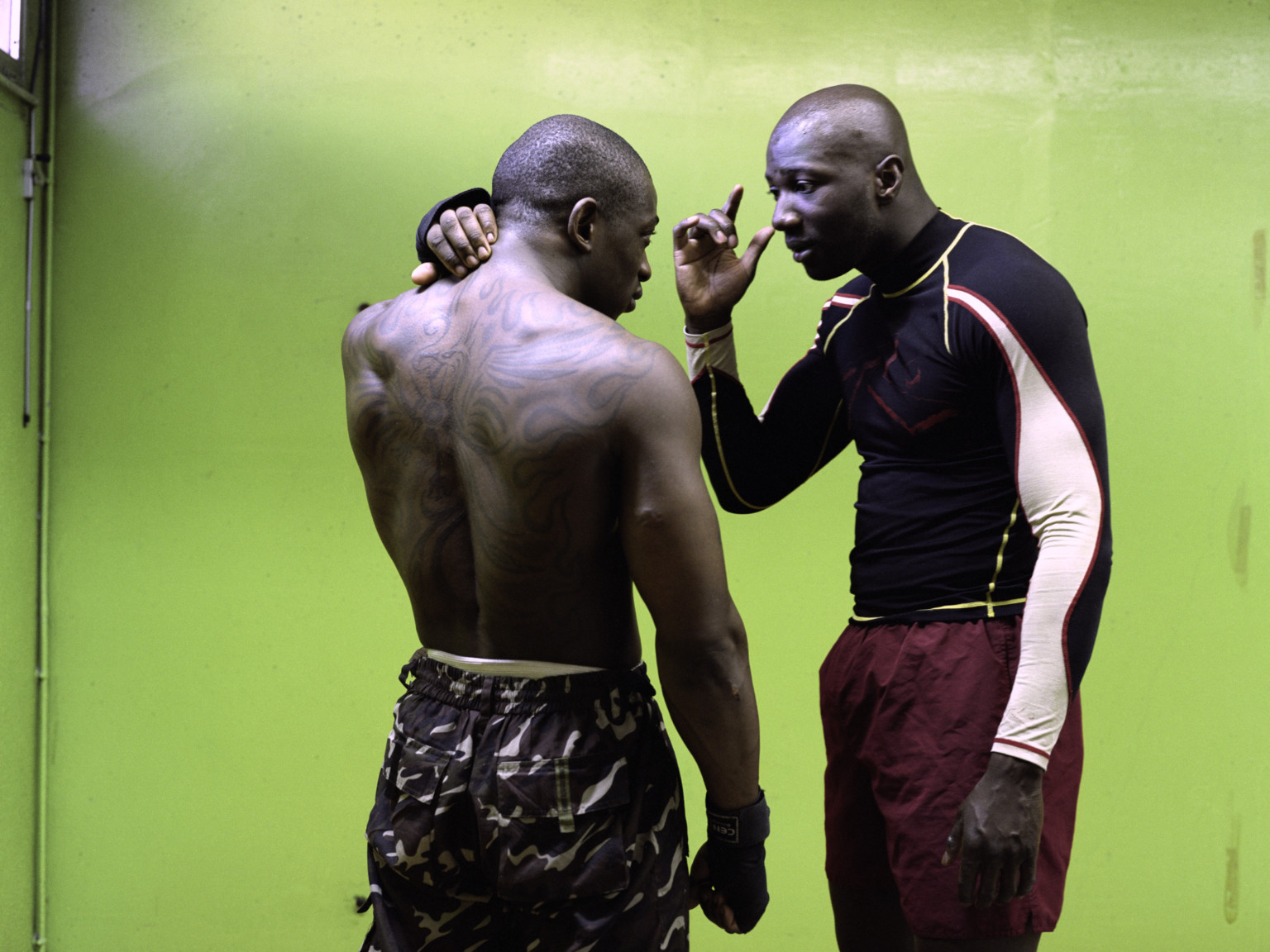
Composing Otherwise
Mohamed Bourouissa’s practice challenges not only the politics of representation, but the mechanics of perception itself. Working across photography, film, installation, and sound, he constructs spaces where legibility is never passive — where power circulates through the act of sensing and attending. With roots in the banlieues of Paris and an enduring connection to Algeria, Bourouissa attends to the margins not as subjects to be revealed, but as structures of relation, opacity, and force. His art privileges embeddedness over spectacle, friction over clarity, and process over resolution.
From the charged immediacy of Why Did I Choose to Make Music, where sonic form becomes a site of memory, rupture, and emotional release, to the vegetal audibility of Brutal Family Roots, Bourouissa’s practice insists on listening not as inclusion, but as structural reconfiguration, where marginal forms recompose the frames. Temps Mort constructs a portrait of incarceration through text messages and mobile footage; Hara!! transforms street cries into spatial composition; and The Whispering of Ghosts listens to the unspeakable weight of landscape in postcolonial Algeria. Across these works, Bourouissa refuses closure. Instead, he makes space for the relational, the opaque, and the unfinished to resonate on their own terms.
Though frequently read through a political lens, Bourouissa resists the reductive framing of the “political artist.” For him, the political is not a message but a material condition—emergent, embedded, and embodied. His work holds open the space of listening, where marginal voices do not simply enter the frame, but reconfigure it.
In this conversation, he reflects on the ethics of proximity, the architectures of control, and the capacities of sound as a relational medium. The dialogue follows Why Did I Choose to Make Music, Bourouissa’s live performance at the Bourse de Commerce on June 25, part of the cultural program curated by Cyrus Goberville, structured around his forthcoming release on PAN and featuring Le Diouck’s Fatéouma in a shared act of sonic authorship.


Can you recall the moment or process through which you first felt drawn to art as a mode of expression? Was it instinctive, or did it emerge in response to something specific, political, personal, or otherwise? You’ve previously said, “I’m not a political artist. But it is political.” How do you reconcile that distance between intention and implication in your own work?
I think it’s a confluence of intuition and personal experience. I wouldn’t even describe it as entering a distinct “world” of art; it felt like something natural, an extension of my way of looking at things. Growing up with friends, we often had strong, critical perspectives on society, and those perspectives inevitably filter into the work. My family background, especially in relation to immigration, also shaped how I see and respond to the world.
Art became a way to speak about what was around me. My first short film, for example, was about a friend who had spent five years in prison. That experience opened a window onto issues of social impact and marginalization. Still, I hesitate to frame the work as having a direct political ambition. The political dimension arises from the subject matter, not from a manifesto.
Any artwork, even when abstract, contains a political charge. It reflects a set of decisions about what matters, what is made visible, what is given form. A landscape, too, is a political statement; it represents a choice, a position. That’s why I say I’m not a political artist, but the work is political, because my environment is political. I’m drawn to these themes because they’re part of the reality I inhabit.
In your work, sound often operates beyond language: as texture, rupture, or residue. What draws you to these non-verbal registers, and what do they allow you to express that image or text cannot?
Text has always posed a challenge for me; it doesn’t come easily. I gravitate more toward visual language because it feels like home. It originates in drawing, in how I learned to observe and translate the world. I’m not seeking to displace text or prove its inadequacy; rather, I’m operating within a modality that feels authentic to me.
Over time, I’ve begun to work across multiple forms: sound, theatre, sculpture. This multiplicity opens up new dimensions. Collaboration has become increasingly important. I value working alongside those who engage with language in other ways. It allows me to expand the limits of my own perspective. I don’t want to work in isolation. I want to inhabit a broader field of exchange.
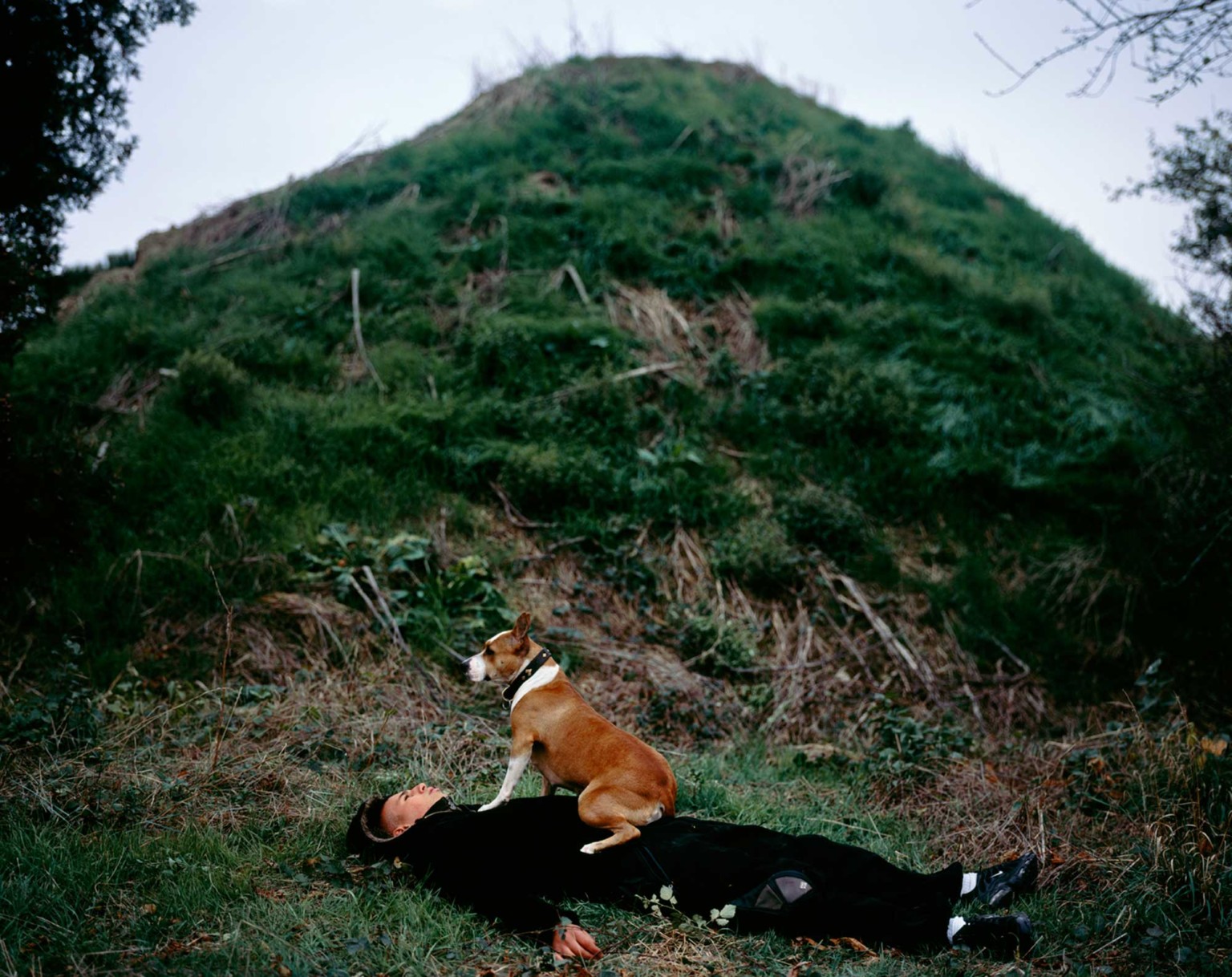
You often work with frequencies that hover at the edge of perception: breath, distortion, cry. Do you consider your sound work a form of sensing rather than representing? In a previous conversation, you mentioned, “I’m interested in the poetry inside the streets.” How do you perceive poetry as a form of resistance or a method for revealing structures of visibility and invisibility in the urban and social landscape?
Poetry is everywhere. It’s embedded in gestures, in the mundane. The way someone walks down the street can be a kind of poem. It’s not about grand declarations but about subtle reframing. Poetry, for me, is not distant or lofty; it’s radically proximate.
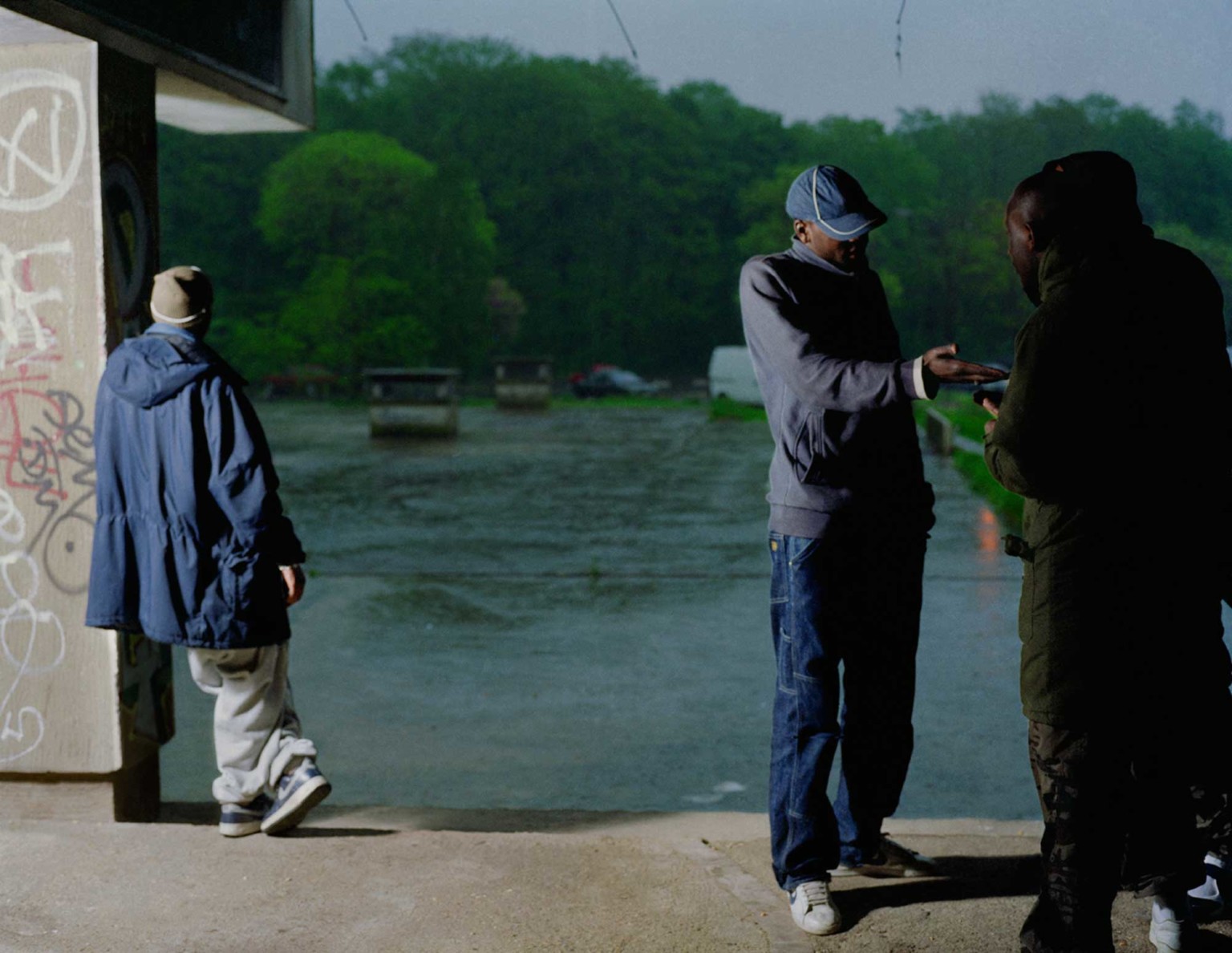
It’s about attention, about the frame you impose on what might otherwise seem insignificant. A movement, a hesitation, a glance: these can carry poetic weight if you’re attuned to them. It’s a shift in the register of perception. Suddenly, the street becomes a site of layered meaning, where visibility and invisibility coexist.
This way of seeing transforms the ordinary. It resists the notion that only certain spaces or subjects are worthy of artistic or critical attention. In that sense, it becomes political. Not in a declarative way, but in its capacity to reorient how we value the everyday and how we read social space.
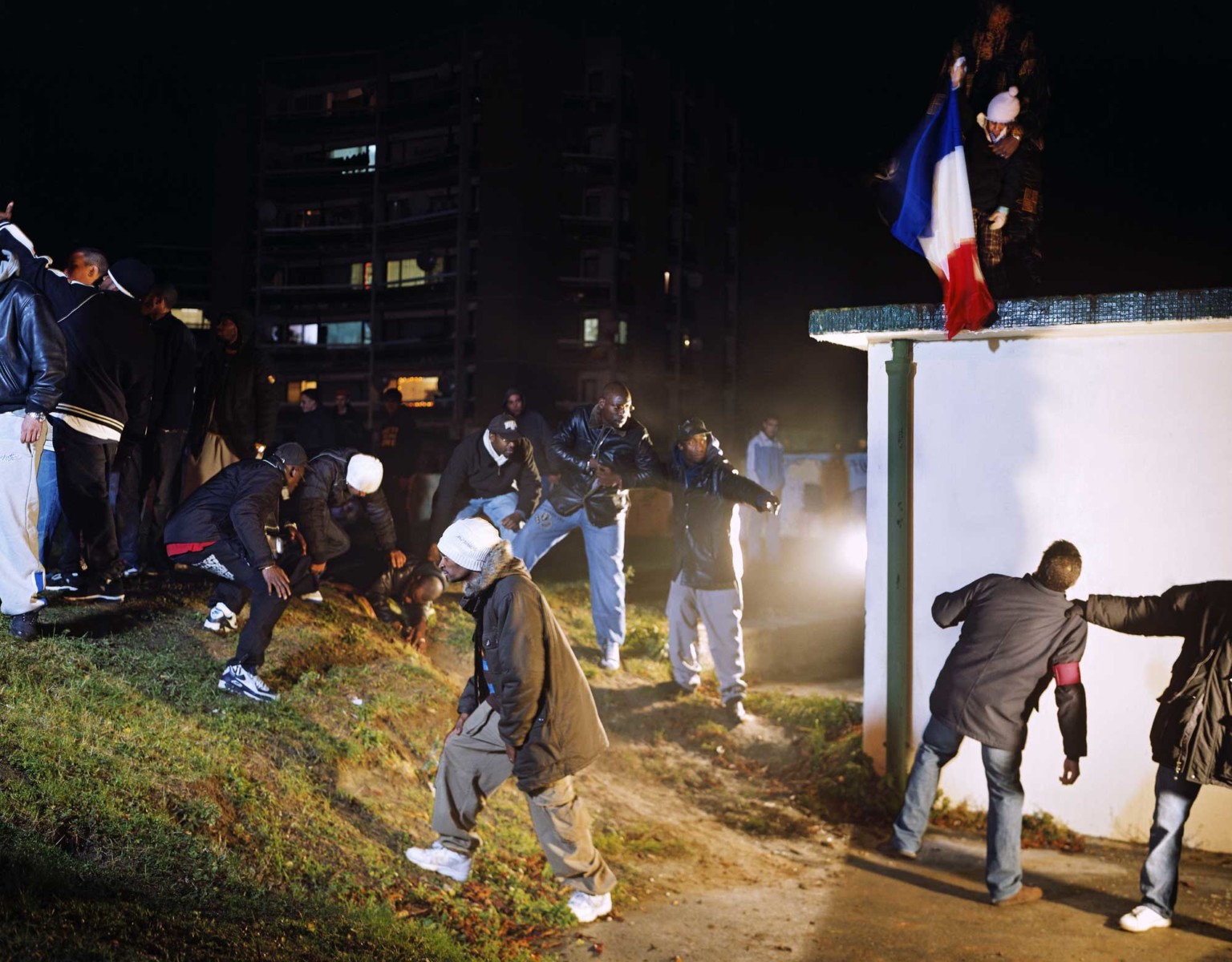
You often resist the notion of art as a detached, rarefied gesture. Instead, your work is grounded in embeddedness: in lived experience, in proximity to systems of surveillance, care, or control. How do you define the ethical responsibility of the artist today?
That’s a profound and complex question. Responsibility, for me, begins with personal experience. The way you live, the people you encounter, the situations you navigate: these all shape how and why you make work.
In one of my projects involving shop lifters, I faced an ethical dilemma. Initially, I hesitated to use their faces without permission. But the more I sat with the material, the more I realized that the images revealed something critical about power, surveillance, and the politics of representation.
People often conflate morality and ethics. Ethical responsibility is often more subtle, more situated. It can emerge in unexpected places, like in the ways people resist visibility, resist being fixed within systems of control.
For me, it’s about being honest with the work, with the process of inquiry. When I reflect on places like Palestine or Gaza, it’s not about adopting a position of authority or offering answers, but about staying with the questions. Trying to understand the complexity. That’s what responsibility means to me: not a grand moral gesture, but a practice of integrity and openness in how you approach the world.
In earlier works, you manipulated photographic codes to interrogate power dynamics and perception. In your sound-based practice, you seem to move toward frequencies that precede or elude language. What do you see as the limits of representation, and how do you move beyond them?
I don’t believe images have strict limits; rather, they offer possibilities. What interests me is how different languages—visual, sonic, spatial—relate to one another. When you think about rhythm, breath, and time, you begin to see how these elements move across media.

In photography, you build rhythm through composition, through the placement of bodies or structures. That rhythm resonates with music. The tension in an image might mirror the tension in a chord. There’s always this porosity, a kind of permeability, between forms.
We often try to silo practices. A painter might not see their work as musical, for instance. But to me, painting is also about music, about the unseen structures that guide attention and emotion. So, rather than seeking the limits of representation, I’m interested in the points of convergence: where languages touch, blur, and expand one another.
You’ve described art as a “means of listening.” How do you cultivate listening as both a formal method and a political stance? And how does this shift in receptivity over expression change what it means to create?
My relationship to sound began with a desire to render visible what is usually hidden. Take plants, for example. In working with mimosa plants, I sought to make their internal life—electrical activity, responsiveness—audible. Using electronic materials, I translated their signals into sound.
This process revealed something profound: we too are electrical beings. Our nervous systems function through signals and rhythms. We breathe in a pattern that is different from plants, yet connected. That realization opened up an understanding of interconnectedness across species.
European modernity often divided plants, animals, and humans into separate categories. But my work resists that. It is about exploring shared atmospheres, the invisible networks that link us.
Listening, then, is not passive. It’s an active, attentive mode of being. It creates space for other forms of presence to emerge. By privileging reception over declaration, creation becomes dialogic: less about imposing meaning, more about holding space for complexity, ambiguity, and relation.


You’ve spoken of repair, of “putting people back in movement” through your work. What does movement mean to you—spatial, psychological, historical? And how do you imagine it operating through your sound work?
Movement, for me, is intimate. It’s tied to how I’ve experienced sound: as a carrier of trauma, memory, and transformation. The cry, for instance, triggers something deeply emotional in me. It’s immediate and visceral.

As I delved into music and sound experiments, I began to understand how frequencies interact with the body. Sound doesn’t just pass through. It resonates. It imprints. It can unlock dormant memories or emotions stored in the body.
Initially, I wanted to create articulate, structured works. But music taught me to let go of that impulse, to prioritize immersion, feeling, and intuition. In that sense, movement becomes psychological, emotional, even cellular. It’s about the capacity to shift something within, to loosen what’s stuck.
Why Did I Choose to Make Music interrogates the very ontology of sound—what music can be, mean, or resist. In hindsight, what does this title mean to you now? Was it ever a question directed inward?
I don’t consider myself a musician in the traditional sense. I make music and sound, yes, but not from a place of formal training. The performance is an experiment, a way of illuminating how sound threads through my broader practice.
The title actually comes from a rapper, Bucha, whose album Timeout Tamo was significant to me. I grew up with hip-hop. Artists like Lunatic shaped how I listened, how I thought. That music offered a mode of reflection and resistance.
Now, music has become a way of mapping my journey—my personal life, my collaborations, my artistic evolution. My son’s mother is a musician, and that also shaped how I approached sound. The title is less a question than a space of reflection, a gesture of transparency about process, time, and becoming.
You’ve previously described sound as a space of repair and catharsis, particularly in relation to trauma and memory. How do you approach sound as a material of healing—not only for the self, but within a collective register?
I began working with plants, trying to amplify their presence. I wanted to make their activity visible through sound. Using tools like SuperCollider, and collaborating with Jordan Kikira, we translated their electrical signals into audible frequencies.
What emerged was a sense of mutuality—how sound mediates relationships between bodies, environments, and histories. I wasn’t thinking in terms of “music,” but of sound as material: something that engages directly with the nervous system, with the brain’s circuitry.
Sound became a conduit for transformation. It made the invisible visible. And in doing so, it created a space not only for personal catharsis but for collective resonance.
In Temps Morts, you wove a fragmented narrative out of lo-fi digital remnants: voice messages, images, mobile footage. Now, with Signal, sound becomes the structural core of the exhibition. How has your understanding of narrative architecture evolved across media?
Let me give an example through architecture. I wasn’t initially drawn to Le Corbusier, but one building changed that: La Tourette (Couvent Sainte-Marie de La Tourette), which he designed with Iannis Xenakis. Xenakis was both an architect and a musician, and you can feel that duality embedded in the space.
Walking through the building, your body begins to follow its rhythm. The windows are not uniform. They vary in size, creating an internal rhythm, a shifting visual tempo. That spatial variation constructs a kind of narrative, one that’s inseparable from bodily experience. You don’t just look at it. You move with it.
This had a profound impact on me. It showed how architecture and sound share a relationship rooted in movement, rhythm, and physical engagement. It’s similar to being part of a rave, where your body becomes part of the architecture. You’re not just in a space. You are participating in its unfolding.
With Signal, I approached the exhibition like an album: each component structured like a track, with intervals and intensities. I wanted to rethink time in a spatial sense, to explore how a narrative can emerge through sonic and architectural rhythms. It’s not about linear storytelling, but about composing an experience that moves through space like a score.
Your collaborations often stem from improvised encounters: from Beirut to Marseille, from street cries to noise frequencies. How do you navigate the space between intuitive listening and constructed composition?
My work is deeply rooted in intuition and in accidents. I don’t claim to have a fixed structure when I begin. The process often emerges from relationships, from encounters that are unplanned and relational rather than theoretical.
In Beirut, for example, I was on a residency and wandered into a flea market. I discovered people selling pirated CDs—music that immediately resonated with my family history, with certain memories and forms of intimacy. I started buying them, listening, and becoming immersed in their textures.
I wanted to dig deeper, so I began asking to meet people connected to this music. That’s how I encountered Sharif Sehnaoui, a major figure in experimental Arab music. Our collaboration wasn’t premeditated. It grew from a shared curiosity, from exchange.
Initially, I imagined turning this into a fiction film. But as time passed, the experience itself—the process of encountering, listening, being present—became more important than the film. I realized that what I’m often working on is not the artwork itself, but the conditions through which an experience takes shape.
My approach isn’t about mastering form or composing in a classical sense. It’s about allowing relationships and intuitions to generate meaning. The work is the constellation that forms around those points of contact.
In The Whispering of Ghosts (2018), shot in Algeria, you work through slowness, spatial tension, and memory. How did returning to Algeria shape your sense of place? What ghosts—personal, colonial, sonic—were you listening for in that landscape?
Returning to Algeria was layered with emotional and historical resonance. The land itself carries echoes: of colonial violence, of migration, of family stories that are rarely told in full. I wasn’t seeking clarity. I was trying to feel the opacity of the place.
There’s a specific weight in the air there, something you can’t articulate but that you feel in your body. The pace of the film, its slowness, reflects that. It’s a way of listening to the landscape, not just through sound but through atmosphere, through vibration.
I was listening for ghosts—not in the spectral sense, but in the material sense. Ghosts as remnants, as structures that continue to inform how we move, how we see, how we remember. In Algeria, those ghosts are everywhere: in the architecture, in the silence between conversations, in the landscapes that hold unspeakable histories.
Works like Brutal Family Roots and Hara!! wrestle with social textures and sonic atmospheres, often drawing from peripheral voices. What role does rupture or disruption play in your approach to sound?
Rupture is fundamental. It interrupts flow. It breaks habits of listening. In both Brutal Family Roots and Hara!!, I wanted to unsettle the sonic field, not for its own sake, but to expose something that lies underneath: a history, a violence, a dissonance that has been buried.
Disruption makes space. It cracks open the surface and allows something else to emerge—something raw, something unresolved. That’s the terrain I’m interested in exploring. It’s not about aestheticizing chaos but about revealing the fractures that already exist.
Peripheral voices, overlooked sounds—these are sites of power and resistance. By amplifying them, or by introducing sonic rupture, I try to reconfigure the listener’s position. To move from passive reception to active confrontation.
You once referenced Booba’s Temps Mort as a formative influence, a gesture that draws a through-line between subcultural archive and contemporary art. How do you view the political potential of referencing popular or underground culture within institutional contexts?
Referencing Temps Mort was a way of acknowledging lineage, of saying that my artistic formation didn’t emerge from the academy but from the streets, from pirated CDs, from lyrics that spoke to dislocation, struggle, and identity.
When this kind of reference enters institutional space, it creates tension—and that’s productive. It forces the institution to contend with forms of knowledge and expression that exist outside its canon. It shifts what is considered legitimate, what is considered worthy.
There is something political in that gesture. But that doesn’t mean I set out to make political art. People sometimes ask me, “Are you a political artist?” and I say no. I don’t make political art in the sense of having a declared agenda. What I make comes from my personal experience, from the subjects I care about—many of which are social, historical, and therefore political.
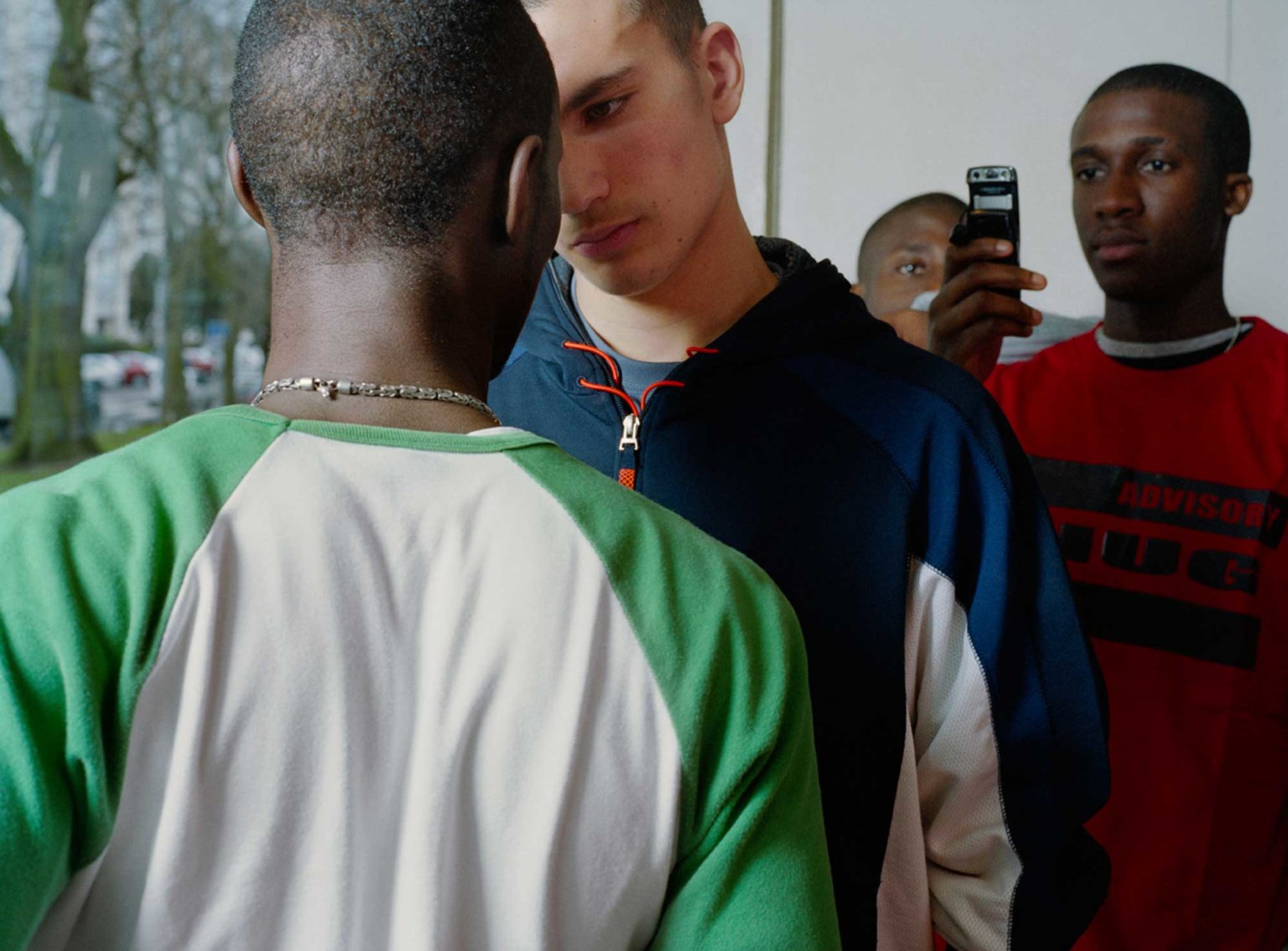
When you set out to make explicitly political art, you risk becoming institutionalized, absorbed into a system of ideological representation. That’s not my approach. I prefer to let the politics emerge from the work itself: through context, through form, through the people and stories it engages with.
Yes, my work is political, but not in a programmatic way. It’s political in how it navigates systems, how it pays attention to lives and places that are often overlooked. It’s about the conditions we live in, how we relate to one another, how we resist, how we care. That, to me, is the deeper politics of art.


At the same time, I work both inside and outside institutions. I don’t depend on institutional validation, but I also don’t reject it. For example, I’m currently involved in a project that gives children in my neighborhood access to video equipment. I’m also part of a collective working with Sahab Museum on a virtual space.
This movement between inside and outside feels necessary. Visibility within institutions can be useful, but it’s not the endpoint. The real work happens in the spaces where life and practice intersect: in the streets, in collectives, in communities. That’s where I want to stay grounded.
All works courtesy the artist, Kamel Mennour Paris/London
- Mohamed Bourouissa, La Fenêtre, 2005. Série Périphérique 2005-2008. Color Photography © ADAGP Mohamed Bourouissa
- Mohamed Bourouissa, Why Did I Choose to Make Music, 2025. Live Performance with the participation of: Lou-Adriana Bouziouane, Le Diouck, Mehdi Anede, Cynthia Léon, Diong-Keba Tacu, Rachid-Amir Moudir, Mushy, Christophe Jacques. Thanks to Simon-Élie Galibert, Yumi Fujitani, Matière Noire and T2G. Courtesy of Pinault Collection. Photography Raphaël Massart.
- Mohamed Bourouissa, Why Did I Choose to Make Music, 2025. Live Performance with the participation of: Lou-Adriana Bouziouane, Le Diouck, Mehdi Anede, Cynthia Léon, Diong-Keba Tacu, Rachid-Amir Moudir, Mushy, Christophe Jacques. Thanks to Simon-Élie Galibert, Yumi Fujitani, Matière Noire and T2G. Courtesy of Pinault Collection. Photography Raphaël Massart.
- Mohamed Bourouissa, La Butte, 2007. Série Périphérique 2005-2008. Color Photography © ADAGP Mohamed Bourouissa
- Mohamed Bourouissa, Le Hall, 2007-2008. Série Périphérique 2005-2008. Color Photography © ADAGP Mohamed Bourouissa
- Mohamed Bourouissa, La République, 2006. Série Périphérique 2005-2008. Color Photography © ADAGP Mohamed Bourouissa
- Mohamed Bourouissa, La Main, 2006. Série Périphérique 2005-2008. Color Photography © ADAGP Mohamed Bourouissa
- Mohamed Bourouissa Généalogie de la violence, Extrait de la vidéo, 2024
- Mohamed Bourouissa Généalogie de la violence, Extrait de la vidéo, 2024
- Mohamed Bourouissa Généalogie de la violence, Extrait de la vidéo, 2024
- Mohamed Bourouissa, Le Téléphone, 2006. Série Périphérique 2005-2008. Color Photography © ADAGP Mohamed Bourouissa
- Mohamed Bourouissa, Why Did I Choose to Make Music, 2025. Live Performance with the participation of: Lou-Adriana Bouziouane, Le Diouck, Mehdi Anede, Cynthia Léon, Diong-Keba Tacu, Rachid-Amir Moudir, Mushy, Christophe Jacques. Thanks to Simon-Élie Galibert, Yumi Fujitani, Matière Noire and T2G. Courtesy of Pinault Collection. Photography Raphaël Massart.
- Mohamed Bourouissa, Why Did I Choose to Make Music, 2025. Live Performance with the participation of: Lou-Adriana Bouziouane, Le Diouck, Mehdi Anede, Cynthia Léon, Diong-Keba Tacu, Rachid-Amir Moudir, Mushy, Christophe Jacques. Thanks to Simon-Élie Galibert, Yumi Fujitani, Matière Noire and T2G. Courtesy of Pinault Collection. Photography Raphaël Massart.









